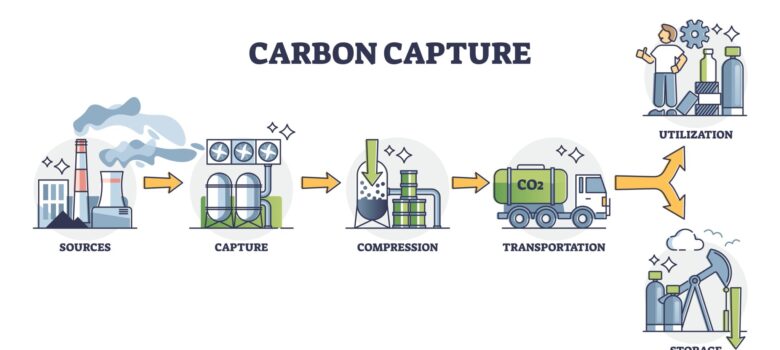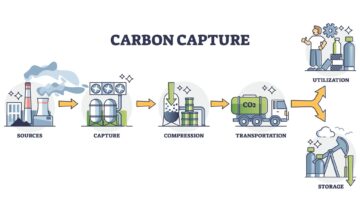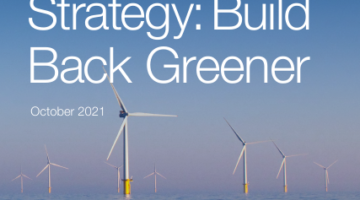
There are countless terms associated with carbon; offsetting, capture, embodied, and operational are just a few. They all play a part in the whole scope of carbon emissions and the Net Zero goal. In today’s blog, we will try to make sense of each term and how they individually fit into the whole puzzle.
What are emissions?
Carbon emissions refer to the release of carbon dioxide (CO2) and other greenhouse gases into the atmosphere, primarily as a result of human activities such as burning fossil fuels (coal, oil, and natural gas) for transportation, heating, and electricity generation. Other activities that contribute to carbon emissions include deforestation, industrial processes, and agriculture. Emissions are a major contributor to global climate change, as they trap heat in the atmosphere and cause the Earth’s temperature to rise.
Carbon emissions are a type of greenhouse gas emissions that occur when carbon-containing materials such as fossil fuels are burned. Carbon dioxide (CO2) is the most common greenhouse gas emitted through human activities, and it remains in the atmosphere for hundreds of years after it is released. Other greenhouse gases that contribute to climate change include methane (CH4), nitrous oxide (N2O), and fluorinated gases.
The concentration of carbon dioxide in the atmosphere has been increasing rapidly since the Industrial Revolution, largely due to the burning of fossil fuels for energy. This has led to an increase in the Earth’s average surface temperature, resulting in a variety of negative impacts, such as rising sea levels, more frequent and severe heatwaves, droughts, floods, and extreme weather events.
What is offsetting?
Carbon offsetting is a way for individuals, organizations, and businesses to compensate for their carbon emissions by investing in projects that reduce or remove greenhouse gas emissions from the atmosphere. The idea behind carbon offsetting is to balance out the carbon emissions that cannot be eliminated by funding or participating in activities that reduce carbon emissions elsewhere.
The process of carbon offsetting typically involves calculating the number of carbon emissions generated by an individual, organization or business over a specific period, such as a year, and then purchasing carbon offsets equivalent to the number of emissions produced. Carbon offsets are typically sold by companies that fund projects such as renewable energy, energy efficiency, forest conservation, and methane capture. By purchasing these offsets, the buyer can claim to have neutralized their carbon footprint.
Carbon offsetting is not a perfect solution to the problem of carbon emissions and climate change, as it does not directly reduce emissions from the source. Some critics argue that it can create a false sense of security and allow individuals and businesses to continue with unsustainable practices. However, proponents argue that it can help raise awareness about the need to reduce carbon emissions and support projects that would not have been implemented otherwise. The effectiveness of carbon offsetting ultimately depends on the quality of the offsets and the transparency of the projects funded.
What is carbon capture?
Carbon capture is a process that involves capturing carbon dioxide (CO2) emissions from industrial processes, power plants, or other sources, and then storing or utilizing the captured carbon in a way that prevents it from being released into the atmosphere. The goal of carbon capture is to reduce greenhouse gas emissions and mitigate climate change.
There are several methods of carbon capture, including pre-combustion, post-combustion, and oxy-fuel combustion. Pre-combustion involves converting fossil fuels into a gas before combustion and then removing the CO2 from the gas stream. Post-combustion involves capturing CO2 after combustion has taken place, typically using solvents or solid adsorbents. Oxy-fuel combustion involves burning fossil fuels with pure oxygen rather than air, resulting in a flue gas with a high concentration of CO2 that can be captured.
Once the CO2 has been captured, it can be transported and stored underground in geological formations such as depleted oil and gas reservoirs, saline formations, or deep coal seams. This process is called carbon capture and storage (CCS). Alternatively, the captured CO2 can be used in industrial processes or as a feedstock for the production of products such as plastics or fertilizers, a process called carbon capture and utilization (CCU).
Carbon capture is still an emerging technology and is currently expensive and energy-intensive, but it has the potential to play a significant role in reducing greenhouse gas emissions and mitigating climate change.
What is embodied & operational carbon?
Embodied carbon refers to the total greenhouse gas emissions associated with the production, transportation, and disposal of a product or material over its entire life cycle. This includes all emissions associated with the extraction and processing of raw materials, the manufacturing and assembly of the product, transportation to the construction site or end user, use and maintenance of the product, and its eventual disposal or recycling.
Embodied carbon is an important consideration in the construction industry, as buildings and infrastructure are responsible for a significant proportion of global greenhouse gas emissions. It is estimated that the embodied carbon of buildings accounts for around 11% of global carbon emissions, and this is expected to increase as the construction industry grows.
There are a variety of strategies that can be employed to reduce embodied carbon in construction, including selecting materials with lower carbon footprints, optimizing the design and layout of buildings to reduce material use, improving construction practices to reduce waste and increase efficiency, and using renewable energy sources in production and transportation.
Reducing embodied carbon is becoming increasingly important in the construction industry, with many building codes and standards incorporating requirements for embodied carbon reduction. Additionally, some companies and organizations are committing to achieving net-zero embodied carbon in their buildings and infrastructure projects.
Operational carbon refers to the greenhouse gas emissions associated with the day-to-day operation of a building, facility, or infrastructure over its lifespan. This includes emissions from the use of energy for heating, cooling, lighting, and powering appliances and equipment.
Operational carbon is a major contributor to global greenhouse gas emissions, accounting for around 28% of global emissions according to some estimates. In the building sector, operational carbon is responsible for around 84% of total emissions, with the remaining 16% coming from embodied carbon.
Reducing operational carbon is a critical component of efforts to address climate change in the built environment. This can be done through a variety of strategies, including improving energy efficiency through building design, retrofits, and the use of energy-efficient appliances and equipment, using renewable energy sources such as solar and wind power, and reducing energy consumption through behavioural changes and occupant engagement.
Many governments and organizations are implementing policies and programs to reduce operational carbon, such as building codes and standards that mandate energy efficiency, incentives for renewable energy use, and public awareness campaigns to promote energy conservation. Some companies and organizations are also committing to achieving net-zero operational carbon in their buildings and facilities, often through the use of renewable energy and energy-efficient technologies.












No Comments yet! Be the first one.